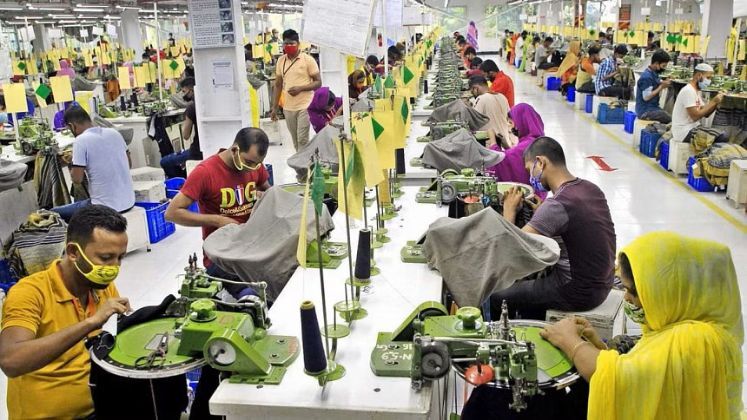
Bangladesh’s Ready-Made Garments (RMG) exports could decline by up to US $ 2 billion this year amid rising tariffs and logistical challenges, according to a forecast by Bloomberg Economics. The report highlights several factors threatening the country’s apparel sector, which currently accounts for over 80 per cent of Bangladesh’s total exports and is vital for its foreign exchange reserves.
The forecast comes as Bangladesh’s RMG exports fetched approximately US $ 38.48 billion in 2024, but the sector faces headwinds from increased US tariffs, potential reduction in shipments to India, energy shortages, and trade restrictions. The US, a major market for Bangladeshi garments, has seen tariff hikes that could impact export competitiveness.
Additionally, India revoked the transshipment facility for Bangladesh’s export cargo in April, complicating transportation routes and raising shipping costs. The move, combined with India’s restrictions on imports of garments, agro-processed foods, and other goods from Bangladesh at land ports, has sparked concerns about significant export losses. India, which imports around US $ 700 million worth of apparel from Bangladesh annually, is expected to replace these imports with domestic sources by 2027 if the ban persists.
The situation is further compounded by Bangladesh’s impending graduation from Least Developed Country (LDC) status in November 2026, which could lead to increased tariffs and duties on its exports, elevating logistics costs and transit times. Such measures threaten to erode Bangladesh’s export competitiveness.
Bloomberg Economics warns that these challenges could also contribute to a broader slowdown in global growth, with an estimated 0.4 percentage point reduction, further impacting Bangladesh’s shipment prospects. The combination of tariff hikes, logistical hurdles, and political restrictions poses a significant risk to the country’s vital garment industry in the year ahead.






